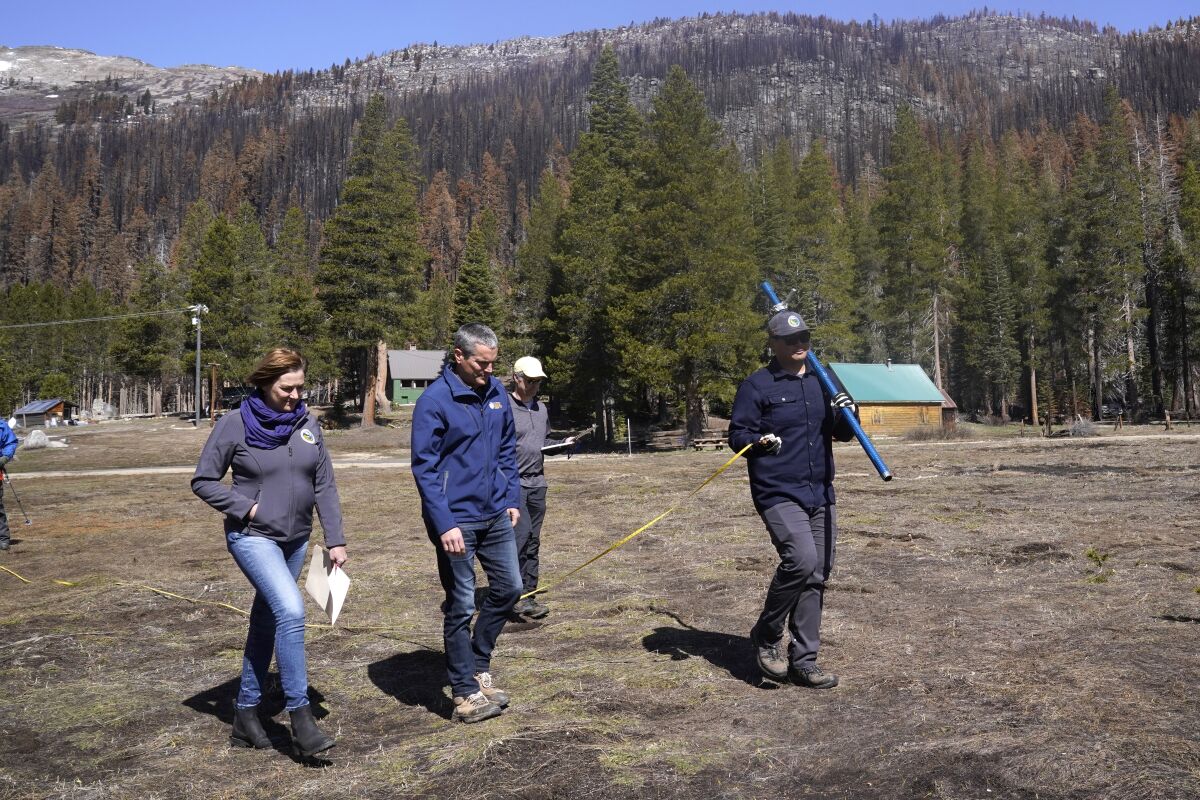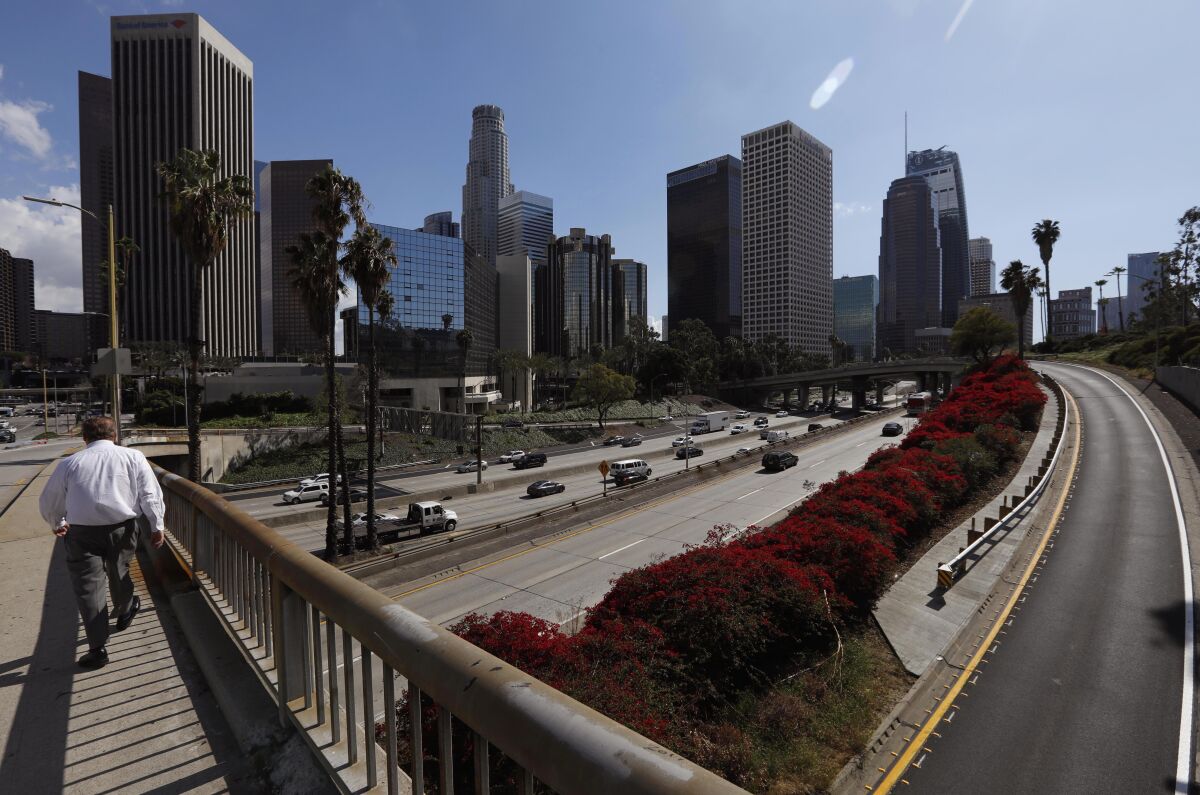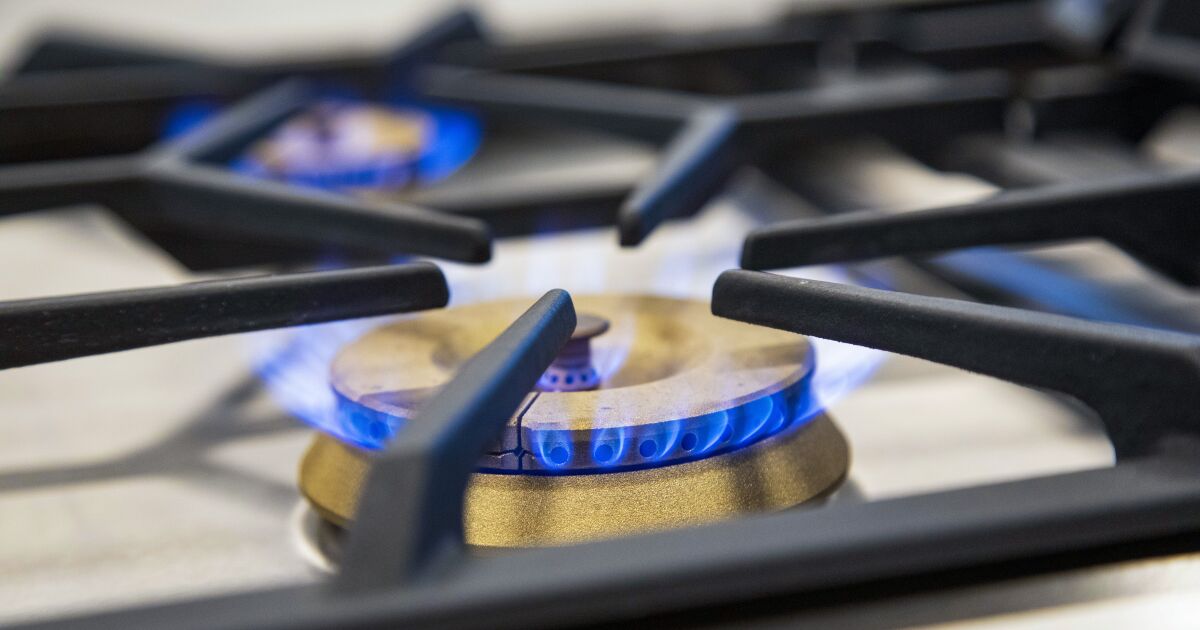This is the Oct. 27, 2022, edition of Boiling Point, a weekly newsletter about climate change and the environment in California and the American West. Sign up here to get it in your inbox.
My name is Tony Briscoe, filling in this week for my colleague Sammy Roth. I joined the Los Angeles Times in April as the air quality reporter.
And as I prepared for the new role and my cross-country move from Chicago to Los Angeles, I faced the daunting task of finding a place to live in one of the country’s most polluted air basins. As many Californians already know, finding an oasis of clean air can be a tricky labyrinth to navigate.
I tried to heed the guidance of public health experts, who generally advise living more than 1,000 feet from highways, with their torrents of tailpipe emissions. I was intimidated by the hotter conditions and stagnant airflow in Southern California’s valleys, which act as an incubator for lung-irritating smog in the summer months. And I tried as much as I could to distance myself from the ubiquitous oil and gas wells that — whether idle or active — are regularly found to be leaking harmful pollutants.
I eventually decided to rent an apartment in the Palms neighborhood. But I neglected to consider a potential source of hazardous air pollution within my own home: the kitchen stove.
Most weekdays, I find myself cooking meals on a stainless-steel range fueled with natural gas. I hear the hiss as I turn the knob clockwise. The clicking of the igniter is followed by the soft whooshing noise as a blue flame emerges and encircles the burner. For most of my life, these noises have been synonymous with cooking.
As of late, I can’t help but consider the implications of living with gas appliances.
In recent years, research has shown cooking with a gas stove, which requires burning methane, can result in combustion byproducts, including unhealthful levels of lung-aggravating nitrogen dioxides, carbon monoxide and formaldehyde. Thankfully, many modern stoves, including mine, are paired with ventilation hoods that can help remove some of those fumes.
However, a study published this month in Environmental Science and Technology has revealed that emissions from gas stoves may present a health risk even when the burners and oven are off. Researchers with PSE Healthy Energy, an Oakland-based nonprofit, have found gas appliances routinely leak unburned gas, even when the stove is not in use.
These emissions could be coming from a variety of sources: a loose connection, a misaligned assembly, aging equipment or a faulty appliance.
The fugitive natural gas has mostly been viewed as yet another climate threat, because methane is a potent greenhouse gas that is 25 times more effective at trapping heat in the atmosphere compared with carbon dioxide (although methane has a shorter lifespan).
But what’s discussed less are the health implications associated with living in a household with leaky gas appliances. The natural gas we have piped into our homes is also commingled with several naturally occurring volatile compounds found underground.
Some of these pose a considerable health risk, including benzene, a known human carcinogen linked to leukemia and that the World Health Organization says has no safe level of exposure.
PSE Healthy Energy researchers collected samples of natural gas leaking in kitchens from 159 homes across California and modeled these unburned emissions. They found, in certain cases, benzene concentrations from leaky gas stoves were comparable to living with secondhand tobacco smoke.
“The thing that we want to people to realize is, just owning a gas appliance comes with this inherent, rather unavoidable risk of having pollution being leaked into your home even when the appliance is off,” said Eric Lebel, a senior scientist with PSE. “The only sure way to eliminate that is to phase out your gas appliances.”
The American Gas Assn., a trade organization representing more than 200 local energy companies nationwide, noted that the study also found that most modeled benzene concentrations remained below California’s public health threshold, and that none exceeded the U.S. Environmental Protection Agency’s guideline. The organization also cautioned that the study’s modeling was based on samples collected from a small segment of California households.
“It is difficult to draw any conclusions from measurements from 159 homes in one state when there are more than 77 million residential, commercial and industrial natural gas customers in all fifty states,” the association said in a statement.
Southern California Gas, the utility that provides natural gas service to 21.8 million consumers, delivered gas that contained the highest concentrations of benzene, though there was a considerable amount of variability, the study found. The distribution pipelines to the north San Fernando and Santa Clarita valleys contained the highest observed levels of benzene, including a peak concentration 66 times that of a similar PSE Healthy Energy study conducted in Massachusetts.
State Sen. Henry Stern (D-Malibu), who represents the San Fernando Valley, has called for an investigation because of the study’s findings. He and some of his constituents have suspected that higher levels of benzene could be a result of how natural gas is being stored nearby.
Plaintiffs in litigation against Southern California Gas over the Aliso Canyon gas storage facility lead a call for the closure of the storage field at a September 2021 rally in Porter Ranch.
(Irfan Khan / Los Angeles Times)
SoCalGas owns Aliso Canyon, a depleted oil reservoir that has been repurposed as an underground storage site for natural gas. Stern, who is among those calling for the closure of the Aliso Canyon facility, wants to know whether the remnants of oil deposits, notably benzene, are commingling with the natural gas before it’s delivered to consumers.
In 2016, an infamous gas leak from Aliso Canyon resulted in benzene emissions, according to state public health regulators.
However, Stern said, utilities have resisted providing the chemical makeup of their gas storage facilities or distribution networks, which would help lawmakers and regulators determine the composition of the natural gas that customers receive.
“If we can sort of track from field to stove, then we’ll know,” Stern said. “But so far, that’s the type of tracking the gas company has fought the state on. And I hope this study just provides an impetus to say, ‘You can’t leave us in the dark here anymore.’”
In May, the Los Angeles City Council voted to ban most gas appliances in new construction to mitigate global warming, joining cities including New York, San Francisco and Seattle.
But that leaves plenty of people living with existing gas appliances. Stern’s family — his wife, 94-year-old father-in-law and 1-year-old daughter — recently moved into a Sherman Oaks home with an aging gas stove and furnace.
“Back when I was single, I only had one set of lungs to worry about. But now, we’re moving into this old home with a clunky old furnace and beater stove, and you don’t know what to do. I’m the real-time experiment — my own family,” Stern said.
“You always think the danger with the stove is when you’re cooking. ‘Don’t burn yourself,’ right? But that’s actually not the most dangerous part of having a stove. It’s when it’s just sitting there.”
Southern California Gas was asked Wednesday to comment on the study as well as Stern’s comments. The utility did not provide a response.
On that note, here’s what else is happening around the West:
TOP STORIES

In April 2022, officials conducted a snow survey in a dry meadow at Phillips Station in the Sierra Nevada.
(Rich Pedroncelli / Associated Press)
Meteorologists say California may not get much winter rainfall, adding to the state’s drought woes. The National Oceanic and Atmospheric Administration is projecting a warm, dry winter for much of California due to the climate pattern known as La Niña, Hayley Smith reports. These conditions are expected to persist through at least January. This comes as grim news to drought-weary Californians seeking relief in what is typically the state’s wettest season, when rain and snowpack help replenish the state’s water supplies. This year, after three consecutive years of drought, there have been more than 6,800 wildfires statewide.
U.S. Transportation Secretary Pete Buttigieg witnessed the effects of sea level rise firsthand while touring a beleaguered California rail line. During a 30-minute train ride, Buttigieg spoke with California transit officials studying how to reroute the LOSSAN rail corridor, a 350-mile line connecting San Luis Obispo and San Diego, reports Phil Diehl of the San Diego Union-Tribune. The LOSSAN rail line — the second-busiest passenger route in the country — has been closed in several places because it sits precariously atop eroding coastal bluffs. Railroad access to San Diego depends entirely on the single route that connects it with Los Angeles and the rest of the United States.
Global heat waves and drought are crippling hydropower. In the United States, electricity generated by hydropower is expected to fall to the lowest level in six years in September and October, Bloomberg reports. In China, hydroelectricity output fell 30%, and the Three Gorges Dam — the world’s largest source of clean energy — saw a much slower flow from the Yangtze River. Shrinking rivers and diminished water flows are expected to be more common as global temperatures rise due to fossil fuel combustion, hindering a key source of renewable energy.
POLITICAL CLIMATE
Gov. Gavin Newsom is threatening to impose a new tax on oil companies. In California, gas prices remain much higher than in the rest of the nation, causing consumers to pay more at the pump while oil companies publicize sizable profits. Newsom is now calling for a so-called windfall profit tax for oil companies that would redeem some of these profits, CalMatters economy reporter Grace Gedye writes.
Climate activists make food messes at museums to urge action on global warming. Two climate activists were arrested after lobbing mashed potatoes onto a Claude Monet painting at a museum in Germany, according to Guardian journalist Sam Jones. The painting was protected by glass and didn’t appear to sustain damage, but this is the latest in a rash of climate protests at museums. A little more than a week prior, two environmental protesters were arrested after tossing soup onto a Vincent Van Gogh painting at the National Gallery in London. The painting sustained minor damage to the frame, but the incident sparked a larger discussion over what forms of protest are deemed acceptable as activists try to raise awareness around the existential threat posed by climate change.
AROUND THE WEST

A pedestrian makes his way over noticeably light traffic on the 110 Freeway in downtown L.A. in March 2020.
(Genaro Molina / Los Angeles Times)
Greenhouse gases fell 9% in California in 2020 due to the COVID-19 pandemic. The California Air Resources Board announced this week that the 2020 decline — the largest single-year drop in human-made heat-trapping gases — was largely owed to fewer cars being on the road due to stay-at-home orders, Associated Press reporter Kathleen Ronayne writes. Passenger vehicles traveled 44% fewer miles in April 2020 compared with April 2019. California’s industrial emissions also dropped considerably in 2020 as demand for oil and gas production and refining activity slumped.
Southern California residents are inhaling emissions from jet-setting celebrities. Reality TV star Kylie Jenner and rapper Travis Scott pose for Instagram photos before they take off from Van Nuys Airport in their private jets. Meanwhile, residents who live near small airports like Van Nuys are inhaling the air pollution left behind by luxury air travel, including ultra-fine particles, a pollutant linked to various cardiovascular and respiratory conditions, writes Los Angeles Times columnist Carolina Miranda. Although Santa Monica and Hawthorne airports are closer to the Pacific, where ocean breezes circulate air, Van Nuys — the nation’s busiest non-commercial airport — sits in the heart of the San Fernando Valley, where these fumes linger.
Los Angeles should be more earthquake-ready after significant government investments. More than 8,000 seismically vulnerable buildings have been retrofitted citywide since Mayor Eric Garcetti began his landmark earthquake safety campaign seven years ago, The Times’ Ron Gong-Lin II reports. The estimated $1.3 billion in investments marks the greatest advancement in decades. However, thousands more buildings still require work to ensure their safety against the next big tremor.
THE ENERGY TRANSITION
More electric school buses will roll out nationwide, making for a much cleaner ride to class. Nearly 400 school districts across the country are expected to receive about $1 billion in grants to purchase about 2,500 “clean” school buses under a new federal program, according to Associated Press environment reporter Matthew Daly. The new fleet of mostly electric buses will be funded by the recently passed Biden administration infrastructure bill. Government officials hope this will curtail greenhouse gases and further transition school districts away from diesel-powered buses.
Oil prices are forecast to decline next year. The invasion of Ukraine caused energy prices to rise 60% this year as countries eschewed importing Russian oil. The World Bank published its Commodity Markets Outlook, projecting the average price of Brent crude oil would ease to $92 a barrel in 2023 — an 11% decrease, Reuters’ Andrea Shalal and David Lawder report. However, the price remains much higher than the five-year average of $60.
A major automaker is ahead of schedule on its clean energy goals. General Motors Co. said it was on pace to power all of its U.S. sites with renewable energy by 2025 — five years ahead of its previous 2030 goal, Detroit News reporter Kalea Hall reports.
ONE MORE THING
As if we needed more things to be afraid of, let’s go ahead and add ants to the list. Photographer Eugenijus Kavaliauskas captured a microscopic image of a carpenter ant revealing a much more menacing profile of the insect than has been cast in Disney Pixar’s “A Bug’s Life,” Washington Post’s María Luisa Paúl writes. If it’s any consolation, maybe it will serve as inspiration for people still searching for Halloween costumes.
We’ll be back in your inbox next week. If you enjoyed this newsletter, or previous ones, please consider forwarding it to your friends and colleagues. For more climate and environment news, follow @_TonyBriscoe and @Sammy_Roth on Twitter.

